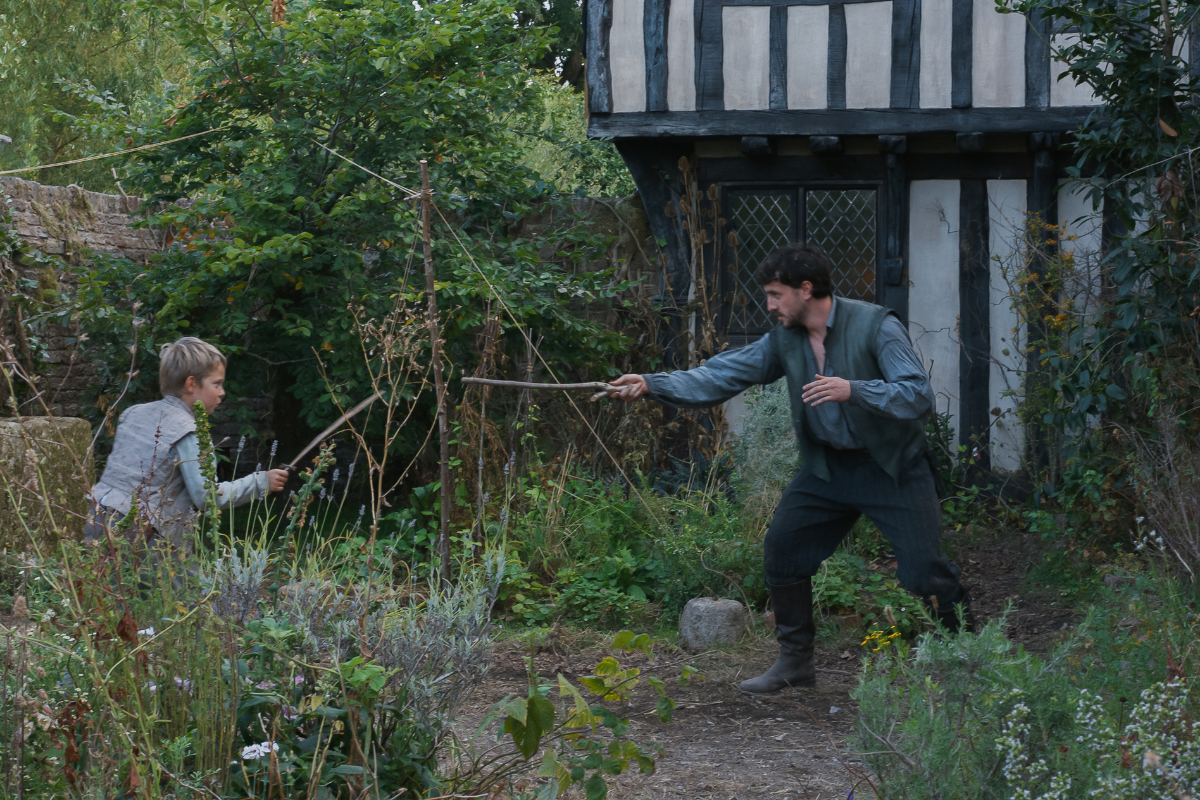Guillermo del Toro’s ‘Frankenstein’ Is The Ultimate Distillation of His Screenwriting Craft
For all of those influences floating around in Guillermo del Toro’s head, including the novel, this is a screenplay adaptation of ‘Frankenstein’ that feels uniquely del Toro.
Frankenstein is one of those properties that has been twisted by the ages. These days, most people have a familiarity with it because of its ubiquity in pop culture at varying levels. The vast majority know it from the sheer overwhelming pervasiveness of imagery of the 1931 interpretation of the novel from Universal pictures starring Boris Karloff (credited as The Monster). For almost a hundred years, the zeitgeist perpetuated the notion that Dr. Victor Frankenstein’s creation rather than the good doctor himself was the monster in Mary Shelley’s 1818 novel.
Part of the issue is that while so many home libraries have a copy of the book and it’s been in the public domain for so long that getting a copy for free is just a few clicks away, far fewer people have taken the time to read it than watch one of the many Universal movies or spin-offs. And even the satires, like The Munsters or Young Frankenstein, that play up the iconography of Frankenstein’s creation as a monster and Frankenstein himself as a tormented genius.
While the 1931 film and subsequent iterations do flirt with the idea that monster is sympathetic, the films do play the horror elements up based more on fear of the creation, not necessarily the creation’s fear.
Mary Shelley’s book pits the creature and Frankenstein against each other in equal measure, rebelling against each other in an endless cycle of violence and vengeance until they are both willing to obliterate each other, both of them monsters borne of their mutual isolation and learned prejudice.
Guillermo del Toro’s adaptation of a two-hundred year old masterpiece takes a different approach that once feels faithful to the novel in many important ways, but also takes ideas and iconographies from the films from the last hundred years, but creates something that feels unique to his particular sensibilities. In interviews, he’s spoken about how important the 1931 version of Frankenstein was to him, but also Frank Darabont’s “pretty much perfect” draft of the screenplay that turned into Kenneth Branagh’s film that, for my money was my favorite adaptation of the book until I saw del Toro’s. Del Toro felt that not much of Darabont’s draft made it to the screen in Branagh’s film.
In 2008, he told Empire, “What I’m trying to do is take the myth and do something with it, but combining elements of Frankenstein and Bride of Frankenstein without making it just a classical myth of the monster. The best moments in my mind of Frankenstein, of the novel, are yet to be filmed … The only guy that has ever nailed for me the emptiness, not the tragic, not the Miltonian dimension of the monster, but the emptiness is Christopher Lee in the Hammer films, where he really looks like something obscenely alive. Boris Karloff has the tragedy element nailed down but there are so many versions, including that great screenplay by Frank Darabont that was ultimately not really filmed.”
For all of those influences floating around in Guillermo del Toro’s head, including the novel, this is a screenplay adaptation of Frankenstein that feels unique to the man who made The Shape of Water.
For screenwriters, one interesting way he created such a solid adaptation of the source material that was careful to be faithful but at the same time personal was by creating a structure that made sense for his intention. Del Toro broke the story into three parts, essentially. He used Shelley’s frame of the expedition to the North Pole and the driven boat captain who rescues Victor Frankenstein to start, establishing the conflict between the scientist and his creation.
Then, as Shelly did, we’re given a tale told by Frankenstein himself as he documents his life leading to the creation of the creature. Del Toro is careful not to use the word monster to describe the creature—at least from his perspective or from the creature’s perspective.
To the screenwriter, the creature is not a monster at all, and this sympathetic view is vital to the construction of the screenplay. Especially as del Toro’s largest deviation from the source material might be in bringing the monster into the cabin of the boat to tell the captain of the ship his part of the tale first hand. In the book, he’s able to relate these things personally to Frankenstein in an ice cave, who is able to relate these things second-hand to the captain. One is left to wonder if Frankenstein is the most reliable narrator at that point, but now we are able to dismiss any doubts, hearing from his own mouth.
By making this subtle change, del Toro seems able to have cut closer to the heart of what makes Shelly’s novel remain relevant after two centuries. We’re left to watch Frankenstein become an out and out villain as he tortures his creation for looking different and not being good enough or smart enough when all he needed to be shown was compassion. He wanted to be shown love, wanted to be able to reach it and understanding. By making the monster more inherently sympathetic, both as he was hidden and tortured by Frankenstein to start, and as a creature in the world seeking this belonging on his own, and as a creation whose creator is seeking his forgiveness, del Toro brings it full circle in a way the narrative needed for this moment and in this adaptation.
One of the remarkable things he’s done here is very much the same thing he did with the 2017 film (and Best Picture winner) The Shape of Water. He took the creature, which is ordinarily treated as the antagonist, and the man responsible for “keeping people safe from it”, who is ordinarily treated as the protagonist, and switched those roles in the story. To that end, he’s able to create a refreshing new look at how we view the story and the people in it.
As you’re writing your story, it’s always sound advice to make sure your antagonist thinks they’re a protagonist, but what if you were to fully reverse the roles and understand that your antagonist was a misunderstood protagonist and your protagonist was really just a colonialist, xenophobic piece of judgmental trash who wasn’t protecting anyone? What possibilities would that open for your story?
Guillermo del Toro has lit the way for this kind of screenwriting and there’s no reason not to follow. In fact, looking back at his work, it’s so often that the monsters and ghosts begin the stories as terrifying specters and end the story as benevolent spirits who were trying to help the people in the narrative who needed it most. Crimson Peak and The Devil’s Backbone are two great examples of his work that do just that—and both are original screenplays.
Guillermo del Toro is an incredible craftsman of filmed narrative and his work is worth studying for these quirks of his worldview. But that’s just one of the things that’s most exciting about del Toro: he’s writing so specifically from his worldview. He is unique in how he sees the world, through his interests and ideals.
You need to find what those things are for you as a screenwriter for you as well. You need to find what’s important for you to comment on and writer about. For del Toro, it’s about the creature being able to fall in love, and the restless spirit helping someone put them at rest. It’s about the giant red hellspawn altruistically fighting the supernatural for the good of humanity and it’s about the frightening things that children overcome in the face of darkness.
These are the things that he keeps coming back to in his work.
I hope he doesn’t trade them in for the world, and I hope he remains curious and finds more ways to express them. As a screenwriter, do your best to find those things about yourself to guide you to your best work, but remain curious to expand them. Be honest about those things and let them guide how you do things and what you work on.
You’re going to come closer to creating something that has an earnest humanity to it, just like the creature in Guillermo del Toro’s Frankenstein. It’s hard to argue that cinema doesn’t need more of this sort of writing.
Frankenstein is now in select Theaters and will release on Netflix on November 7.
Bryan Young is an award-winning filmmaker, journalist, and author. He's written and produced documentary and narrative feature films and has published multiple novels and a non-fiction book. He's written for Huffington Post, Syfy, /Film, and others. He's also done work in the Star Wars and Robotech universes. You can reach him on Twitter @Swankmotron or by visiting his website: swankmotron.com.







